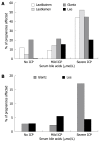Intrahepatic cholestasis of pregnancy
- PMID: 19418576
- PMCID: PMC2678574
- DOI: 10.3748/wjg.15.2049
Intrahepatic cholestasis of pregnancy
Abstract
Intrahepatic cholestasis of pregnancy (ICP) is a pregnancy-specific liver disorder characterized by maternal pruritus in the third trimester, raised serum bile acids and increased rates of adverse fetal outcomes. The etiology of ICP is complex and not fully understood, but it is likely to result from the cholestatic effects of reproductive hormones and their metabolites in genetically susceptible women. Equally unclear are the mechanisms by which the fetal complications occur. This article reviews the epidemiology, clinical features, diagnosis, etiology and management of ICP.
Figures


References
-
- Svanborg A. A study of recurrent jaundice in pregnancy. Acta Obstet Gynecol Scand. 1954;33:434–444. - PubMed
-
- Thorling L. Jaundice in pregnancy; a clinical study. Acta Med Scand Suppl. 1955;302:1–123. - PubMed
-
- Fisk NM, Bye WB, Storey GN. Maternal features of obstetric cholestasis: 20 years experience at King George V Hospital. Aust N Z J Obstet Gynaecol. 1988;28:172–176. - PubMed
-
- Johnston WG, Baskett TF. Obstetric cholestasis. A 14 year review. Am J Obstet Gynecol. 1979;133:299–301. - PubMed
-
- Kater RM, Mistilis SP. Obstetric cholestasis and pruritus of pregnancy. Med J Aust. 1967;1:638–640. - PubMed
Publication types
MeSH terms
LinkOut - more resources
Full Text Sources
Other Literature Sources
Medical

